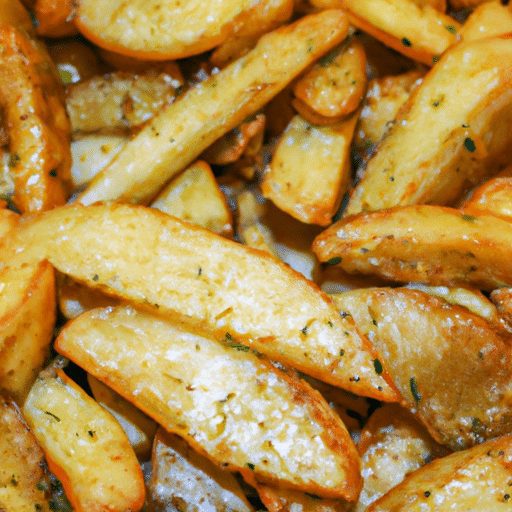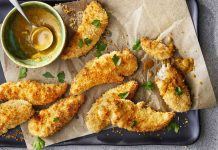Looking to level up your air frying game but not sure what oil to use? Look no further! In this article, we’ll uncover the secret to achieving perfectly crispy and delicious air-fried foods. From popular choices like avocado oil to unexpected contenders like grapeseed oil, we’ll explore the pros and cons of each option and provide you with all the information you need to make the best choice for your tastebuds. Get ready to elevate your culinary creations and become the air fryer guru you’ve always wanted to be!
Health Considerations
Smoke Point
When choosing an oil for cooking, one important factor to consider is the smoke point. The smoke point refers to the temperature at which the oil begins to break down and emit smoke. Cooking with an oil beyond its smoke point can result in a burnt taste and potentially harmful compounds being released into the air. It is important to select an oil with a high smoke point, especially for high-heat cooking methods like frying or searing.
Saturated Fat Content
Another consideration when it comes to oil selection is the saturated fat content. Saturated fats are known to raise cholesterol levels and increase the risk of heart disease when consumed in excess. Therefore, it is recommended to choose oils that are low in saturated fats to promote better cardiovascular health.
Trans Fat Content
Trans fats are created through a process called hydrogenation, which turns liquid oils into solid fats. These artificial trans fats have been found to be even more detrimental to heart health than saturated fats. It is advisable to avoid oils that contain trans fats altogether, as they can have a negative impact on cholesterol levels and increase the risk of heart disease.
Nutritional Value
While oils are primarily used for cooking and flavoring, they can also contribute to the nutritional value of a dish. Some oils, such as olive oil and avocado oil, contain healthy monounsaturated fats, which can provide beneficial effects on heart health when consumed in moderation. Additionally, oils like sesame oil and coconut oil may offer unique nutritional profiles and health benefits.
Commonly Used Oils
Canola Oil
Canola oil is a popular choice for cooking due to its neutral flavor and high smoke point. It is low in saturated fat and contains a good amount of monounsaturated fats, making it a heart-healthy option. Canola oil is versatile and can be used for frying, baking, and sautéing.
Olive Oil
Olive oil is well-known for its rich flavor and numerous health benefits. It is a staple in Mediterranean cuisine and is often used for salad dressings, marinades, and drizzling over cooked dishes. Extra virgin olive oil, in particular, is highly regarded for its superior quality and antioxidant content. It has a lower smoke point compared to other oils, so it is best suited for low to medium heat cooking.
Peanut Oil
Peanut oil is commonly used in Asian cuisines for its unique flavor and high smoke point. It adds a nutty taste to dishes and is perfect for stir-frying, deep-frying, and roasting. It is important to note that peanut oil may not be suitable for those with peanut allergies.
Avocado Oil
Avocado oil is a relatively new addition to the cooking oil market, but it has gained popularity for its high smoke point and health benefits. It is rich in monounsaturated fats and vitamin E, which are known to promote heart health and act as antioxidants. Avocado oil is versatile and can be used for sautéing, grilling, and salad dressings.
Coconut Oil
Coconut oil has a distinctive taste and aroma, making it a favorite for baking and adding flavor to dishes. It is a highly saturated fat, so it should be consumed in moderation. While coconut oil has been debated for its impact on heart health, it can still be a suitable option for occasional use and in recipes that specifically call for its unique flavor.
Specialty Oils
Sesame Oil
Sesame oil is commonly used in Asian cuisines for its rich, nutty flavor. It is often added as a finishing touch to dishes, as its flavor can be quite strong. Sesame oil has a low smoke point, so it is best used for flavoring or light sautéing.
Grapeseed Oil
Grapeseed oil is extracted from the seeds of grapes and has a mild flavor. It has a high smoke point, making it suitable for high-heat cooking methods. Grapeseed oil is also commonly used in salad dressings and marinades.
Sunflower Oil
Sunflower oil is a versatile oil that can be used for a variety of cooking methods, including frying, sautéing, and baking. It has a neutral flavor and a high smoke point, making it a popular choice for everyday cooking.
Oil Blends
Vegetable Oil Blends
Vegetable oil blends are a combination of different types of oils, typically including canola, soybean, and/or sunflower oil. These blends offer a neutral flavor and a high smoke point, making them suitable for various cooking methods. They are often used in commercial cooking due to their affordability and versatility.
Avocado and Olive Oil Blend
An avocado and olive oil blend combines the health benefits of both oils. This blend has a higher smoke point compared to pure olive oil, making it suitable for higher heat cooking. It also offers the rich flavor of olive oil and the nutritional profile of avocado oil.
Flavored Oils
Truffle Oil
Truffle oil is a specialty oil that is infused with the rich and earthy flavors of truffles. It can add a luxurious touch to dishes and is often used as a finishing oil. Truffle oil is best used in small amounts to avoid overpowering the other flavors in a dish.
Chili Oil
Chili oil is made by infusing oil with chili peppers to create a spicy and flavorful condiment. It is commonly used in Asian cuisines to add heat and depth of flavor to stir-fries, noodles, and marinades.
Garlic Oil
Garlic oil is infused with the bold flavor of garlic and can be a convenient alternative to using fresh garlic cloves. It can add depth of flavor to a variety of dishes, including pasta, roasted vegetables, and marinades.
Healthier Alternatives
Applesauce
Applesauce can be used as a substitute for oil in baking recipes to reduce the overall fat content. It adds moisture to baked goods and can enhance the flavor, especially in recipes that call for spices like cinnamon or nutmeg. However, it is important to note that applesauce may not be suitable for all types of baked goods, as the texture and structure may be affected.
Non-stick Cooking Spray
Non-stick cooking sprays are a convenient option for reducing the amount of oil used in cooking. They are typically made with a blend of oils and have a very low calorie and fat content. Non-stick cooking sprays can be used for greasing pans, grilling, and sautéing.
Oil-Free Cooking
In certain cooking methods, such as steaming, boiling, or poaching, oil is not necessary at all. These methods can produce healthy and flavorful dishes without the need for added oils. Consider exploring different oil-free cooking techniques to reduce overall fat intake.
Considerations for Different Foods
Vegetables
When cooking vegetables, it is important to consider the type of oil that will complement their flavors and textures. Lighter oils, such as olive oil or avocado oil, are generally suitable for roasting or sautéing vegetables, as they allow the natural flavors to shine through. For stir-frying, peanut oil or canola oil can add a unique depth of flavor. It is best to avoid heavily flavored oils when cooking vegetables to avoid overwhelming their delicate taste.
Meat
When cooking meat, high-heat methods like grilling or searing require an oil with a high smoke point to achieve a desirable crust. Oils like canola or avocado oil are good choices as they can withstand high temperatures without smoking. For marinades or basting, flavorful oils like sesame oil can enhance the taste of the meat.
Seafood
Seafood can benefit from oils that have a subtle flavor, such as canola or grapeseed oil. These oils allow the delicate flavors of seafood to shine through without overpowering them. Olive oil can also be used for certain seafood dishes, providing a pleasant Mediterranean taste.
Breaded Foods
When breading foods, it is common to use oils with a higher smoke point, such as vegetable or canola oil, for frying. These oils can withstand the heat required for achieving a crispy and golden crust. For a healthier alternative, consider oven-baking breaded foods using non-stick cooking spray or using an air fryer.
Personal Preference and Experimentation
Ultimately, the choice of oil comes down to personal preference and experimentation. Each type of oil offers its own unique flavors and characteristics, and the best oil for one person may not be the same for another. It is important to consider health considerations, cooking methods, and the specific food being prepared. Trying out different oils and blends can help discover new flavors and textures that enhance our cooking repertoire.
Conclusion
Choosing the right oil for cooking is an important decision that can have an impact on both flavor and health. Factors such as smoke point, saturated fat content, and nutritional value should be taken into account when selecting an oil. Commonly used oils like canola and olive oil offer versatility and health benefits, while specialty oils like sesame and grapeseed oil provide unique flavors. Oil blends and flavored oils can add depth to dishes, while healthier alternatives like applesauce and non-stick cooking spray offer lower-fat options. Considering the specific needs of different foods and personal taste preferences, there are various oils available to suit every cooking style and preference. Experimentation in the kitchen can lead to exciting discoveries and a whole new world of flavors.





































